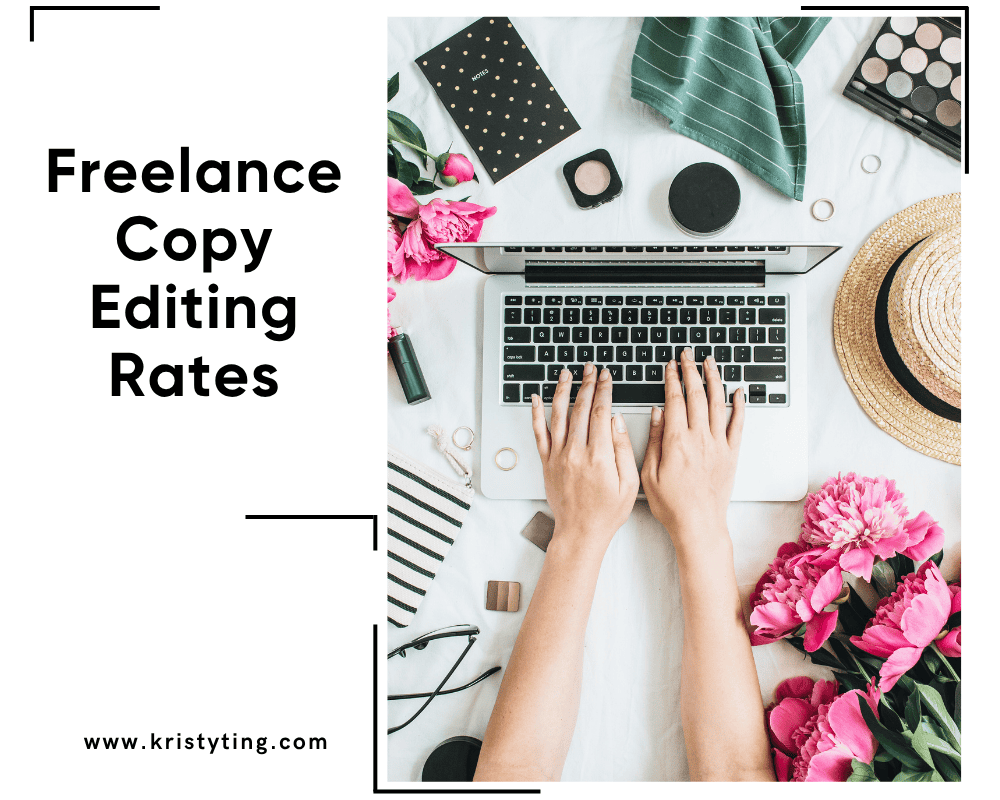This post may contain affiliate links. If you use these links to buy something we may earn a commission at no extra cost to you. Thank you for your support!
Writing can be the door opener to a lot of things, whether you are writing blog posts, short stories, or a persuasive essay. Using the right writing techniques can help you engage your readers and make your ideas shine.

This blog will cover the different ways to create intriguing content – so you get more ideas and write better!
1. Narrative Writing
Narrative writing is a powerful way to tell stories. It allows you to draw readers into your world and encourage them to feel deeply about the characters and events. Key aspects include crafting a strong narrative arc, developing characters effectively, and creating vivid settings.

Crafting a Strong Narrative Arc
A strong narrative arc is the pillar for engaging storytelling. It typically consists of five key parts: exposition, rising action, climax, falling action, and resolution.
- The exposition introduces the main characters and setting.
- Rising action builds tension through the challenges faced by the characters.
- The climax is the turning point, where the main conflict reaches its peak.
- Falling action shows the aftermath of the climax.
- Resolution ties up loose ends and provides a satisfying ending.
This structure helps keep the reader engaged and creates a satisfying journey. You want to ensure the plot flows smoothly and keeps the reader’s attention throughout.
Character Development
Strong characters and immersive settings are key to great narrative writing. Well-developed characters with clear motives, relatable traits, and meaningful backstories help readers connect. Use dialogue, actions, and conflicts to show growth, and incorporate figurative or emotive language to evoke feelings.
Setting and Description
For settings, descriptive writing and sensory details bring the story to life, transporting readers to a new world. Small environmental details and techniques like pathetic fallacy—where the setting mirrors emotions—can add depth and strengthen the story’s emotional impact. Together, these elements create a memorable and engaging experience for readers.
Best Use:
Great for storytelling, books, short videos, and blog posts that want to emotionally engage the mind of the reader or deliver a message through an experience.
2. Expository Writing
Expository writing deals with explaining or informing the reader about a specific topic. It is written with clear facts and organized information, not including personal opinions. Knowing the right technique will improve your writing to a great extent.

Mastering the Informative Essay
An effective informative essay begins with a clear topic sentence. This sets the tone and direction for your entire piece. Use facts and evidence to make your point. Use lists and bullet points to organize complex information that your reader needs to know at a glance.
Examples, along with definitions, should be used to explain complicated terminology. This will not only enhance the content but enable the reader to relate to the message. Never forget to present ideas in a logical sequence throughout the essay. Transition words such as “first,” “next,” and “finally” help lead your reader through your thoughts in a smooth way.
When writing your first draft, let the ideas flow freely without emphasizing perfection. Use this technique to overcome writer’s block. Upon completion, spend time revising to ensure clarity and coherence. It is through editing that your essay is made to be polished and effective.
Analyzing Cause and Effect
Analyzing cause and effect makes you explain how one important thing leads to another; use examples for explanation to make each point readily relatable and engaging. For example, you could look into the fact that a major event in the famous book, The Great Gatsby, caused changes in the lives of the characters.
Use tables or lists to make multiple causes or effects clear so that it is easier for the readers to follow.
In expository writing, avoid emotional language; focus on facts and logical reasoning. Rhetorical questions serve as a great technique for making a reader think but should only be related to your analysis. Thus, the reader will be left thinking about the connections you are making all along.
Best Use:
Perfect for educational purposes, writing projects, research papers, or content aimed at explaining a particular topic with facts and logic.
3. Descriptive Writing
Descriptive writing is sometimes described as painting a picture using words. It involves all senses, which leads the reader to experience things vividly. Using specific techniques, you can make your writing more effective and impactful.

Using Imagery and Sensory Details
Imagery is an important element of descriptive writing. It involves using language that appeals to the five senses: sight, sound, smell, taste, and touch. By describing a scene, you must consider how each could contribute to the overall picture.
For instance, instead of “the flower is beautiful,” you write, “the red rose blooms with velvet petals, releasing a sweet fragrance that fills the air.” This way, the reader feels they are living through the scene.
Add sensory details to build a strong connection. This will stir emotions and let the reader imagine the words. Always try to engage with the reader’s senses because it leads them to dive deeper into the story.
The Power of Metaphors and Similes
Metaphors and similes are powerful literary devices used in descriptive writing. A metaphor directly compares two things, while a simile uses “like” or “as.” Both can create vivid imagery that resonates with readers.
One image that makes you think of a warm, happy place is “her smile was a bright sun.” You could also use a comparison to say “her smile was like a ray of sunshine,” which has the same effect but in a great way. These similarities help you say complicated things clearly and beautifully.
Using these tools helps you share your thoughts and make connections. They can take simple words and turn them into pictures that readers will remember. In any piece of writing, using metaphors and similes will make your explanations much better.
Best Use:
Ideal for creating immersive content in novels, travel blogs, product descriptions, or short videos focused on sensory-rich experiences.
4. Persuasive Writing
Persuasive writing aims to convince the reader of a particular viewpoint. This style uses literary techniques that engage the reader’s emotions and logic while presenting strong arguments.

Building an Argument
To build an effective argument, start by identifying your main point. Specify what you want to convince the reader to believe or do. Use topic sentences as clear guidelines for your writing and keep the focus on the best idea.
Then, evidence comes. For instance, facts, statistics, and quotes from credible sources all prove your claims. Never forget counterarguments. Acknowledge opposition and explain why your view is more valid. This indicates critical thinking on the issue.
You can further strengthen your argument using literary devices, such as rhetorical questions or emotive language. Ask questions that make the reader think about it further or use vivid language to convey a strong emotion. Even bullet points could be a clear format to help write down key points.
Best Use:
Best for marketing campaigns, advertisements, speeches, or any writing that aims to inspire action or change opinions.
5. Technical Writing
Technical writing is all about delivering information in clear and precise forms such that the readers can understand easily. This type of writing requires attention to detail and effective communication strategies. The following areas are essential for success in technical writing.

Clarity in Technical Communication
Clarity is a key ingredient to effective technical writing. You must ensure your message is readable and comprehensible. These include:
- Choosing Simple Words: Use straightforward language that avoids jargon unless necessary.
- Structured Content: Organize your information logically, using headings and bullet points for easy navigation.
- Active Voice: Use active voice to make sentences clearer and more direct, which helps retain the reader’s interest.
Document Design Principles
Effective document design enhances readability and comprehension. Focus on the layout and visual elements of your text. Important principles include:
- Consistent Formatting: Use a uniform font, size, and color scheme throughout your document to create a professional appearance.
- White Space: Incorporate white space to avoid clutter, making it easier for readers to focus on the content.
- Visual Aids: Use images, charts, or tables when necessary to illustrate key points or data.
Best Use:
Great for instruction manuals, product guides, training materials, or software documentation where clarity and precision are key.
6. Creative Writing
When engaging in creative writing, using the right techniques can enhance your storytelling. Exploring literary devices and experimenting with different genres can help you grab the reader’s attention and evoke emotions.

Exploring Literary Devices
Literary devices or creative writing techniques are tools that help bring your writing to life. They include different techniques like imagery, metaphorical expressions, and figurative language. For example, imagery makes use of sensory details to create pictures vividly within the reader’s mind. For instance, this could be describing a red rose in such a way that brings out its color, scent, and beauty.
Another effective tool is situational irony, in which the result is unlike what you would want to happen. This creates depth and interest in your storytelling. Using emotive language enables readers to connect with the characters on a personal basis. As soon as they feel pain, joy, or struggle with them, they have more chances they will remain engaged with your work.
Literary Devices Example
Literary devices are techniques that are used by writers to enhance the expression. They help catch the reader’s attention and deliver deep meaning. Here are some common literary devices:
- Alliteration: Repeating the same starting sound for a set of words creates a rhythm. For example: “Peter Piper picked a peck of pickled peppers.”
- Metaphor: A figure of speech that compares two things directly, like saying, “Time is a thief.” It helps create vivid images.
- Imagery: It is very descriptive language that activates people’s imagination using phrases such as “the red rose bloomed in the sun.”
- Rhetorical Question: A rhetorical question, asked but not meant to be answered. It’s thought-provoking for readers, such as, “Who doesn’t want to be happy?”
- Hyperbole: Use hyperbole. Telling, “I’m so hungry I could eat a horse,” is the kind of exaggeration used for emphasis.
Experimenting with Genres
Try your hand at as many genres of writing as possible. Each genre has its rules and techniques. For instance, if you want to be a fiction writer, you can start writing a short story or even a novel with strong characters and an interesting plot with some flavor of elements such as dialogue to help develop the characters and improve the flow of the story.
Other types, such as persuasive writing, entice you to convince the reader of your point. This might include rhetorical questions and strong topic sentences to seem interesting. While experimenting with different genres, you obtain fresh perspectives, making your writing stronger and much more versatile for different projects.
Best Use:
Best for poetry, fiction, screenplays, or any artistic writing project designed to evoke emotion and spark imagination.
7. Web Writing
When writing for the web, connecting with your audience and making your content easy to find is important. Using effective techniques can help you grab the reader’s attention and improve your site’s visibility.

Writing for an Online Audience
Know their interests, needs, and preferences. Use short paragraphs (under 70 words) and simple language to make your message digestible. Headings, bullet points, and concise sentences help highlight the main ideas and keep readers hooked.
Bring your content to life with a descriptive writing style and metaphorical expressions. These techniques paint a vivid picture in the mind of the reader and make your particular topic more engaging.
Search Engine Optimization
Don’t forget search engine optimization (SEO). Research keywords related to your topic and use them naturally in the text, headings, and metadata. Linking credible sources adds authority and boosts search rankings, making your content more visible. Mastering these English writing techniques ensures your web content gets noticed and resonates.
Best Use:
Essential for websites, landing pages, and blogs where user engagement and SEO optimization are priorities.
8. Writing for Social Media
Writing for social media requires a different approach because you need to bring the reader’s attention to the headline quickly and keep them engaged. It involves using effective techniques that suit the platform as well as encourage interaction.

Creating Engaging Content for Platforms
Style is what makes great social content. Use short sentences and simple words for clarity. All posts need to catch the audience’s eye right from the beginning. Use a powerful hook or rhetorical question to hook the readers at the outset.
Your posts should be relatable, which can be achieved using emotive language, like, for instance, using the phrase red rose does not only paint a picture but creates a feeling within. Use literary devices; there are metaphors and situational irony to enrich your writing. Never forget your audience’s interests and write to match their taste.
Engagement and Call-to-Action Techniques
Engagement is key in social media writing. Ask questions, use a strong call to action, and encourage interaction, like comments or clicks. Whether crafting posts or short videos, your goal is to make the reader feel connected and inspired to act. On social media, style and strategy go hand in hand for writing success.
Best Use:
Perfect for quick, engaging content on Instagram, Twitter, Facebook, and other platforms where attention spans are short, and descriptive writing styles need to shine.
Elements of Writing Style
Writing style involves very important techniques to get your audience’s attention. The appropriate tone, clear use of words, and proper sentence formation are the essential elements for effective writing.
1. Pick the Right Tone
Think of your tone as how you talk to people. Would you talk to your best friend the same way you talk to your teacher? Probably not! Your tone depends on who’s reading your stuff.
- Think About Your Audience: Are they reading your work for the first time? If so, make it simple and fun!
- Match Your Purpose: If you’re trying to teach something, use clear words. If you’re telling a story with a happy ending, use exciting words that show how awesome it is.
- Use Emotions: Instead of saying, “It’s nice,” say, “It’s AMAZING! ” Words that spark a sensory experience make people feel something.
Example:
Boring: “The day was sunny.”
Better: “The sun felt warm on my face, like a big hug from the sky.”
2. Keep It Clear and Simple
Big, fancy words aren’t always the best. Use words that everyone knows so they can understand you easily. This is one of the best basic writing techniques.
- Be Short and Sweet: Why say “due to the fact that” when you can just say “because”?
- Use Familiar Words: It’s like talking to a friend—keep it simple!
- Avoid Long Sentences: Break up your ideas into shorter ones. Readers will get your point faster.
Example:
Long: “The individual was overwhelmed due to a large number of tasks.”
Short: “She felt stressed because there was so much to do.”
3. Mix Up Your Sentences
Writing is like a song—it’s better when it’s not all the same. Use short sentences for excitement and long ones to explain things. It makes your writing flow like a straight line but with some fun curves.
- Active Voice is Your Friend: “I kicked the ball” sounds way better than “The ball was kicked by me.”
- Use Fun Tricks: Try cool tools like pathetic fallacy (making the weather match feelings) or funny comparisons.
Example:
“The rain cried as he sat alone” (That’s a pathetic fallacy—cool, right?).
4. Start with Brainstorming
Every good idea starts with a plan. This is your starting point.
- Use your reader’s point of view: Ask yourself, “What would they want to know?”
- Try brainstorming techniques: Make lists, draw pictures, or just jot down everything that pops into your head.
- Think of real life: Write like you’re talking about something that happened to you. Readers love things they can imagine.
5. Add Time Frames and Details
Make your writing feel real by using time frames. This helps people understand when things happen.
Example:
Boring: “A long time ago, banks were different.”
Better: “Back in the 1990s, you had to wait in long lines at the bank. Now, with online banks, you can do it all from your phone!”
6. Be Human
The secret to great writing? Show your human qualities. Make your readers laugh, cry, or feel excited. Don’t just tell them facts—show them through examples, stories, or happy endings.
Example:
Instead of: “She was sad.”
Say: “Tears rolled down her cheeks as she hugged her dog. She felt like her heart was broken.”
Quick Recap
- Use the best writing techniques to make your words fun and easy to read.
- Create a sensory experience so your readers feel like they’re there.
- Keep your sentences clear and simple, just like talking to a friend.
- Brainstorm ideas with fun English writing techniques like making lists or doodles.
- Add details, periods, and real-life examples to bring your writing to life.
- Always write with human traits—because readers love stories that feel real.
Now, grab your pen (or keyboard) and give it a go!
Frequently Asked Questions
How can I learn more about writing techniques?
Read famous books (Harry Potter) or blogs about writing; you can seek online courses or join workshops and writing communities. Continue to practice proficient writing regularly and ask others for feedback to acquire a better perspective on your skills and make refinements to them. The more you write, the more confident and skilled you will become.
What is a useful technique for online writing?
Use short paragraphs and clear headings for online writing to make it easily readable. Optimize the content by selecting keywords to increase search engine visibility. Create titles and meta descriptions that will attract attention. Breaking the text with bullet points and lists will make it easier for readers to understand key points.
How can I improve my writing style?
Improving your writing style involves trying out genres and techniques, learning what works best for you, reading as widely as possible to benefit from other good writers, and regular practice in developing your style. Editing and revising are essential so your work is as clear and concise as possible.
What’s the best way to get started if I have writer’s block?
To overcome writer’s block, start by doing freewriting, writing whatever comes to mind without thinking about it having to be perfect. Divide the content so that it becomes easy to tackle, and brainstorm by making lists or mind mapping to get creative ideas flowing. Reflect on your original purpose and audience to refocus and regain momentum.
How can I engage readers better?
First of all, get the reader to engage with your content by having a powerful hook that is likely going to be an interesting or bold question. Other literary devices include metaphors or sensory details to make the text more vivid and believable. Break long texts into headings, bullet points, or short paragraphs for interest and readability.
Wrapping Up
And there you have it—the best writing techniques to take your content to a whole new level! Whether you’re working in Google Docs, drafting a quick text message, or tackling plot development in a story, these tips make writing fun and effective.
Play with different perspectives, use brainstorming techniques, and keep the tone of your writing authentic. Writing is more than face value—it’s about sharing new perspectives!





